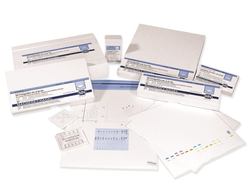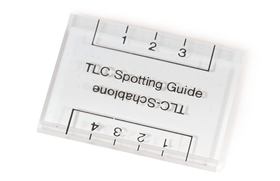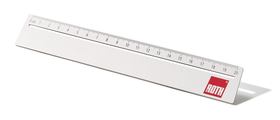product.details.print
HPTLC-plaatjes ALUGRAM® Xtra Nano-SILGUR / UV254 with Nano Silica Gel and concentration zone
247,25 €/VE
Excl. btw | 25 stuks Per VE
Bestelnr. 1HAH.1
Geschikt voor / Toebehoren
Productdetails
HPTLC Plaatjes met Nano Silica Gel
- Specifiek oppervlak: ca. 500 m2/g
- Middelgrote poriënbreedte: 60 Å
- Specifiek poriënvolume: 0,75 ml/g
- Deeltjesgrootte: 2-10 µm
- Hoger scheidingseffect
- Kortere scheidingstijden en afstanden
- Kleinere monsterhoeveelheden van 0,01-0,1 µl (10-100 nanoliter)
- Lagere verspreiding door extreem kleine hoeveelheden
- Hogere detectiegevoeligheid
U vindt nog meer aantrekkelijke aanbiedingen om uw chromatografielaboratorium te vervolledigen op onze Chromatografie pagina!
HPTLC-plaatjes ALUGRAM® Xtra Nano-SILGUR / UV254 with Nano Silica Gel and concentration zone

| Plaatformaat | 10 x 10 cm |
| Laagdikte | 0.2 mm |
| Materiaal | aluminium |
| Wijziging | Unmodified silica gel (SiOH), Concentrating zone (kieselguhr, diatomaceous earth or diatomite) |
| Fluorescentie-indicator | ja |
| Scheidingsprincipe | Normal phase (NP) |
| Fase | Xtra Nano-SILGUR |
| Partikel grootte | 5-17 µm |
| Partikel soort | Fully porous particles (FPP) |
| Specifiek oppervlak volgens BET | 500 m²/g |
| Poriëngr. | 60 Å |
| Poriënvolume | 0.75 ml/g |
| pH-stabiliteit | 2,0-8,0 |
| Temperatuurstabiliteit | High |
| Aanbevolen toepassing(en) | Aflatoxins, Alkaloids, Amines, Amino acids, Analgetics, Antibiotics, Hormones, Marihuana compounds, Normal phase (NP), Patulin, Steroids, Sweeteners, Vitamins |
- Tussentotaal: 0.00
| Bestelnr. | Plaatformaat | Laagdikte | VE | Prijs | Hoeveelheid | |
|---|---|---|---|---|---|---|
| 1HAH.1 | 10 x 10 cm | 0,2 mm | 25 stuks |
247,25 € |
|
|
|
Op voorraad
Beschikbaar
In bestelling
Niet meer verkrijgbaar
Leveringsdatum onbekend
|
||||||
- Tussentotaal: 0.00
Downloads / MSDS
Algemene informatie
U vindt nog meer aantrekkelijke aanbiedingen om uw chromatografielaboratorium te vervolledigen op onze Chromatografie pagina!
Although the principle of thin-layer chromatography is more than a century old, it did not make its breakthrough as an analytical method until about 50 years ago.
Thanks to the development of new sorbents and supports, as well as increasing instrumentation and automation, TLC has become a versatile separation method. It is used both in qualitative analysis and in quantitative analysis.
Applications range from simple manual separation processes in classic TLC to automated processes in HPTLC (high performance thin layer chromatography).
Advantages of thin layer chromatography:
- Higher sample throughput in less time
- Suitable for screening tests
- Pilot process for HPLC
- The ready-to-use TLC layer functions as a data storage device for separation results
- The separated substances can be used later for further analysis (e.g. IR, MS)
- By switching the mobile and the stationary phases, the separation process can be optimised quickly and cost-efficient











